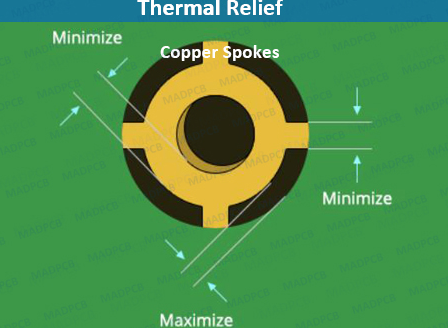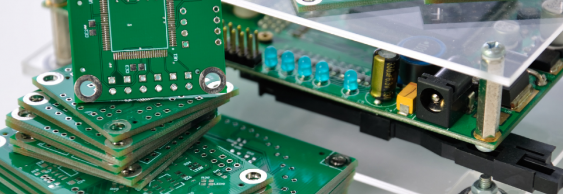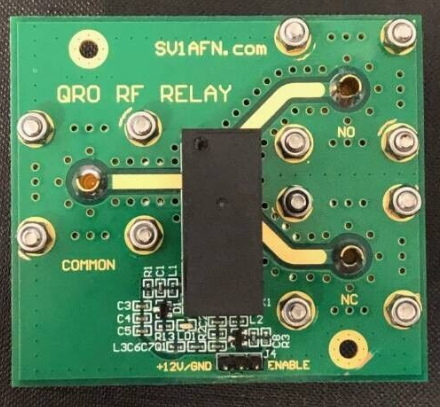Principles of PCB design for single-chip microcomputer control board
The most basic process of designing a circuit board can be divided into three steps: design of circuit schematics, generation of network tables, and design of printed circuit boards. Whether it is the layout of devices on the board or the routing, there are specific requirements.
For example, input and output routing should be avoided as much as possible to avoid interference. When two signal lines are routed in parallel, ground wire isolation is necessary. The wiring of two adjacent layers should be as perpendicular to each other as possible. Parallel wiring is prone to parasitic coupling. The power supply and ground wires should be divided into two layers as much as possible and perpendicular to each other. In terms of line width, a wide ground wire can be used to make a loop for digital circuit PCB, that is, to form a ground network (analog circuits cannot be used in this way), and a large area of copper is used.
The following article explains the principles and some details that need to be paid attention to in the design of PCB for single-chip microcomputer control board.

1.Component layout
In terms of component layout, related components should be placed as close as possible. For example, the clock input of the clock generator, crystal oscillator, and CPU are prone to noise, so they should be placed closer together. For those devices that are prone to noise, small current circuits, large current circuit switching circuits, etc., they should be kept away from the logic control circuits and storage circuits (ROM, RAM) of the microcontroller as much as possible. If possible, these circuits can be made into circuit boards separately, which is conducive to anti-interference and improves the reliability of circuit operation.
2.Decoupling capacitors
Try to install decoupling capacitors next to key components such as ROM, RAM and other chips. In fact, printed circuit board routing, pin connections and wiring may contain large inductance effects. Large inductance may cause serious switching noise spikes on the Vcc routing. The only way to prevent switching noise spikes on the Vcc routing is to place a 0.1uF electronic decoupling capacitor between VCC and the power ground. If surface mount components are used on the circuit board, chip capacitors can be used directly close to the components and fixed on the Vcc pins. It is best to use ceramic capacitors because this type of capacitor has lower electrostatic loss (ESL) and high-frequency impedance. In addition, the dielectric stability of this capacitor over temperature and time is also very good. Try not to use tantalum capacitors because its impedance is higher at high frequencies.
When placing decoupling capacitors, you need to pay attention to the following points:
Connect an electrolytic capacitor of about 100uF across the power input end of the printed circuit board. If the volume allows, a larger capacitance is better.
In principle, a 0.01uF ceramic capacitor needs to be placed next to each integrated circuit chip. If the gap in the circuit board is too small to place it, a 1-10 tantalum capacitor can be placed every 10 chips.
For components with weak anti-interference ability, large current changes when turned off, and storage components such as RAM and ROM, decoupling capacitors should be connected between the power line (Vcc) and the ground line.
The lead of the capacitor should not be too long, especially the high-frequency bypass capacitor cannot have a lead.

3.Ground wire design
In the single-chip control system, there are many types of ground wires, including system ground, shielded ground, logic ground, analog ground, etc. Whether the ground wire is reasonably laid out will determine the anti-interference ability of the circuit board. When designing the ground wire and grounding point, the following issues should be considered:
Logic ground and analog ground should be wired separately and cannot be used together. Their respective ground wires should be connected to the corresponding power ground wire. When designing, the analog ground wire should be as thick as possible, and the grounding area of the lead-out end should be as large as possible. Generally speaking, for analog input and output signals, it is best to isolate them from the microcontroller circuit through an optocoupler.
When designing the printed circuit board of the logic circuit, its ground wire should form a closed loop to improve the circuit’s anti-interference ability.
The ground wire should be as thick as possible. If the ground wire is very thin, the ground wire resistance will be large, causing the ground potential to change with the change of current, resulting in unstable signal level and reduced anti-interference ability of the circuit. If the wiring space allows, ensure that the width of the main ground wire is at least 2-3mm, and the ground wire on the component pin should be around 1.5mm.
Pay attention to the selection of grounding points. When the signal frequency on the circuit board is lower than 1MHz, the electromagnetic induction effect between the wiring and the components is small, while the loop formed by the grounding circuit has a greater impact on interference, so one-point grounding should be used to prevent it from forming a loop. When the signal frequency on the circuit board is higher than 10MHz, the ground impedance becomes very large due to the obvious inductance effect of the PCB wiring design. At this time, the loop formed by the grounding circuit is no longer the main problem. Therefore, multi-point grounding should be used to minimize the ground impedance.

5.Others
·In addition to increasing the width of the power line as much as possible according to the size of the current, the power line and the ground line should be arranged in the same direction as the data line when designing the PCB wiring. At the end of the PCB wiring design, the ground line is used to cover the bottom layer of the circuit board without wiring. These methods are helpful to enhance the anti-interference ability of the circuit.
The width of the data line should be as wide as possible to reduce the impedance. The width of the data line should be at least not less than 0.3mm (12mil), and it is more ideal if 0.46~0.5mm (18mil~20mil) is used.
Since a via in a circuit board will bring about a 10pF capacitance effect, which will introduce too much interference to high-frequency circuits, the number of vias should be reduced as much as possible during PCB wiring design. In addition, too many vias will also reduce the mechanical strength of the circuit board.






